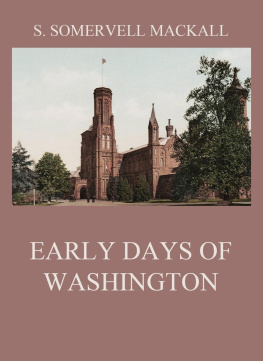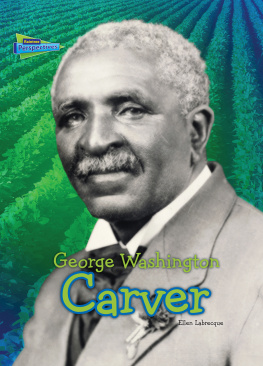CHAPTER I.
In thesedays, when we are interested in old times and old things, let us go back ahundred years and unravel the golden thread that binds and holds in poeticindistinctness all that our people were doing in days long ago. Very few areleft to tell the tale, and few of the old colonial places remain. Ourgeneration reverences not the old land-marks, and they are rapidlydisappearing. The old Semmes Tavern on High Street, Georgetown, where GeneralWashington spent many hours, was destroyed about one year ago.
It isinteresting that Georgetown should at last be incorporated in the seat ofGovernment, for when Congress was trying to decide upon a place for theNational Capital the old town stood a fair chance of being chosen; but themembers could not agree, and there was so much contention at the meeting thatthe decision was left to President Washington. The proclamation fixing thepermanent seat of Government of the United States was, however, issued inGeorgetown, the conclusion of which read:
Intestimony whereof I have caused the seal of the United States to be affixed bythese present and sign the same with my hand. Done at Georgetown aforesaid the30th day of March, in the year of our Lord, 1791, in the Independence of theUnited States the fifteenth. By the President,
GeorgeWashington. Thomas Jefferson.
Thehistorical old town lies on the side of a hill, sloping gradually downward towhere the beautiful Potomac winds along, its shining waters reaching as far asthe eye can see. Opposite the town picturesque Analostan Island appears,covered with delicate green foliage, formerly the home of John Mason, son ofColonel George Mason, who was the first of the Mason family in this country, amember of the English Parliament in the reign of Charles I. He opposed the Kingand made his escape to Stafford County, Virginia, losing all his possessions inEngland. The renowned James Murray Mason, who drafted the fugitive slave law of1850, and was afterward appointed commissioner to England and France, and whowas captured on the British mail steamer Trent with his colleague, JohnSlidell, by Captain Wilkes, was born on Analostan Island. His wife was ElizaMargaretta Chew. Only a small portion of the walls of the old building remain.These are entirely overgrown with vines, the building having long since beendestroyed by fire. In the church of the Holy Trinity at Stratford-upon-Avon arememorial tablets to this branch of the Mason family.
Beyondthe island rise the stately hills of Virginia and the slopes of the Arlingtonestate, now our National Cemetery. These grounds are part of a grant made in1669 by Sir William Berkeley, Governor of Virginia, to Robert Howson, and namedin honor of the Earl of Arlington. The property then passed to ColumbusAlexander's family, who still hold a large tract of the original land. The Cityof Alexandria, so named for this family, was first known as Beall Haven,"Nature suggesting the title, and doubtless smiled more sweetly than everbefore when the original founder adopted it. And a beautiful haven it is, abroad, smooth water, and well protected by hills on every side "from thefierce winds that blow."
Arlingtonthen passed into the hands of John Park Custis, the son of Martha Dandridge(who was afterwards the wife of George Washington). The estate at his deathwent to his son, George Washington Park Custis, whose daughter, Eliza, marriedLieutenant Robert E. Lee, of the United States Army, June 30, 1831. Theceremony was performed by Rev. William Mead, afterward Bishop of Virginia, andtook place in the drawing-room of the old mansion, where, in later days,visitors were requested to register their names. Mrs. Robert E. Lee inheritedthe property from her father, and thus, when Fort Sumter was fired upon,Arlington was the home of the great chieftain of the Confederacy.
In thesoutheast corner of the Cemetery, towards Alexandria, where several hundredConfederate dead are buried, are two simple tablets marking the graves ofGeorge Washington Park Custis and of Mary Lee Custis, his wife, erected bytheir daughter, Mrs. Robert E. Lee. They have no inscription except the names,dates, and the words: "Blessed are the merciful, for they shall obtainmercy." As we drive through the beautiful grounds one wishes the statelyold oaks could speak and tell of all that has gone before, for Arlingtonremains one of the most beautiful spots on which the sun ever shone. The house,with its majestic columns, stands on the brow of the hill, the grassy lawnsloping three hundred feet to the Potomac, giving from the portico anexceptionally fine view of the City of Washington.
Near thefoot of the wooded slope, and not far from the banks of the river, is a crystalspring, the great delight in bygone days of picnic parties from Georgetown,Washington and Alexandria during the warm season. This fountain of Naturegushes from the roots of a large oak which doubtless stood there when the redman, years ago, came thither to slake his thirst. Around the spring is abeautiful grassy lawn shaded by a variety of trees and affording a pleasantsummer resort. Actuated by generous hospitality, Mr. Custis erected structuresfor the accommodation of visitors at Arlington Spring. A wharf was built forconvenient landing, a store-room and kitchen, a dining hall sixty feet long,and a saloon of the same dimensions for dancing, and all that was asked inreturn was the observance of these rules: "No alcoholic liquors to be soldon the premises and no visitors allowed on the Sabbath." A little boat,called the G. W. P. Custis, ran between the neighboring cities and ArlingtonSpring during the warm season, and almost every day parties of from fifty totwo hundred were seen there.
Thewinter of eighteen hundred, following the invasion of Washington by theBritish, was so severe that loaded wagons could pass backward and forwardacross the ice of the frozen Potomac with perfect safety. To mitigate the sadwant of fuel in those days, Mr. Custis permitted families needing wood for homeuse to cut and remove what they needed from Arlington forest free of charge.












